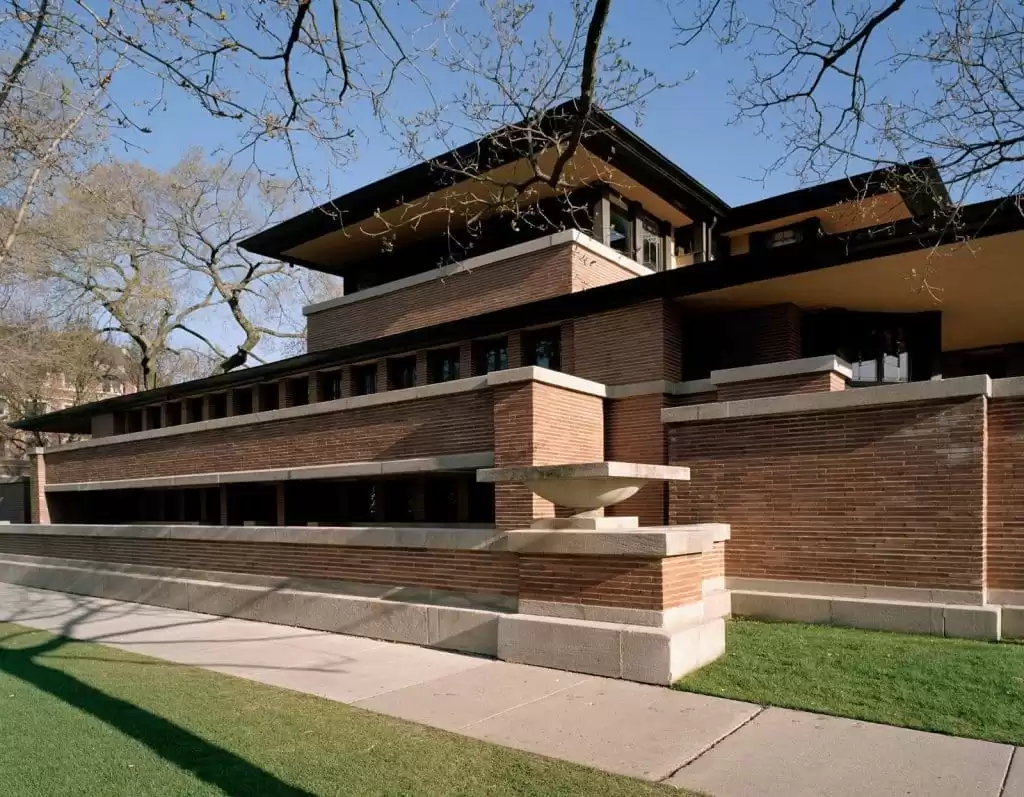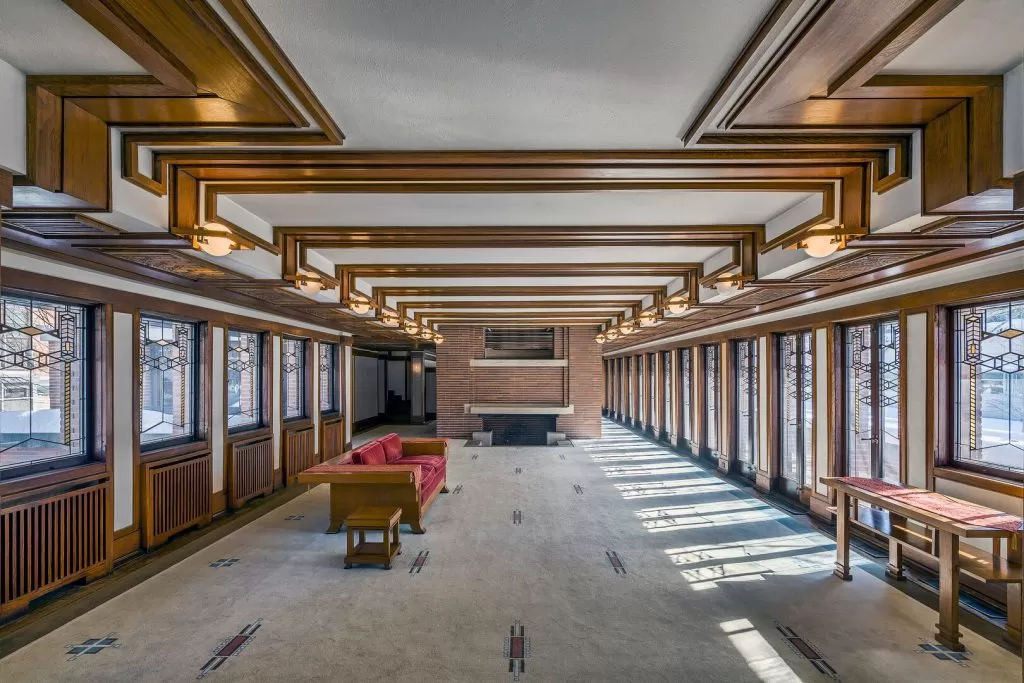Fallingwater
One of the best pieces of advice I ever received was this: “Pick a simple task and do it better than anyone else.”
I can’t say that I always have, but it has guided me through 14 books and 33 Arts and Crafts Conferences.

Last week Leigh Ann and I capped our memorable driving trip to Craftsman Farms for the annual Stickley Weekend Symposium and Gala by spending Monday morning at Fallingwater, Frank Lloyd Wright’s 1935 mid-century masterpiece. While it was anything but a “simple task,” Wright proved he could design a house “better than anyone else.”
But was it this house?
Fallingwater has been called the most famous private residence in America, and I admired Wright’s design as much as anyone else on the tour, but as we drove away I had to ask Leigh Ann, “Could you live there?”

Interior of the Fallingwater residence. Photo courtesy of Jeffrey Neal at the English Wikipedia, CC BY-SA 3.0, Link
The question implied my own answer, for the combination of stone, slate, steel, and concrete exuded no warmth to me. Had it not been perched over a bucolic tumbling waterfall and shaded by towering oaks and maples in a lush narrow glen, I’m not so sure it would have surpassed my personal Wright favorite: the 1910 Robie House.
Granted, this might be like comparing apples to oranges. And Wright’s interpretation of organic architecture dictates that you cannot separate any house from its setting, but a house can be different from a home.
A house is a structure. A home is where a family lives.

Exterior of the Robie House. Photo courtesy of the Frank Lloyd Wright Trust.
In 1910, Wright designed the Robie House in south Chicago, not far from the shore of Lake Michigan. It, too, has been earmarked with a lofty title, as it is considered the most famous Prairie School house in America. When the owner’s bankroll permitted, Wright preferred to design all of the lighting, furniture, windows, and even the textiles throughout his commissions, including this 9,000-square foot home.

Interior of the Robie House. Photo courtesy of the Frank Lloyd Wright Trust.
Defending his stance, Wright declared, “It is quite impossible to consider the building one thing and its furnishings another. They are all structural details of its character and completeness.”
The Robie House has recently emerged from a long-awaited $11 million restoration. If you toured it in the past, it is worth a return visit, which I hope to make in the coming months. But even when it was only partially furnished and in need of repair and restoration, the Robie House always felt like a home to me. It always has been a place that I could envision myself living, which is one of the highest compliments we can award any architect or designer.

Dining room at the Robie House. Photo courtesy of www.flwright.org.
One of the things I admire most about Frank Lloyd Wright was his ability not only to be the best at what he did, but to be years ahead of everyone else. In 1895, years before Elbert Hubbard or Gustav Stickley began making Arts and Crafts furniture, Wright was designing some of the finest, most advanced spindle Arts and Crafts furniture. By the time other designers caught on, Wright had moved on, anticipating – or influencing — the next change of taste before anyone else.
Consider this: Though labeled a mid-century design, Wright created Fallingwater in 1935 – fifteen years before the middle of the 20th century.
Ahead of his time — and always leaving the others wondering, “How did he come up with that?”.
Until next week,
“An architect’s most useful tools are an eraser at the drafting board and a wrecking bar at the site.” – Frank Lloyd Wright
Bruce
